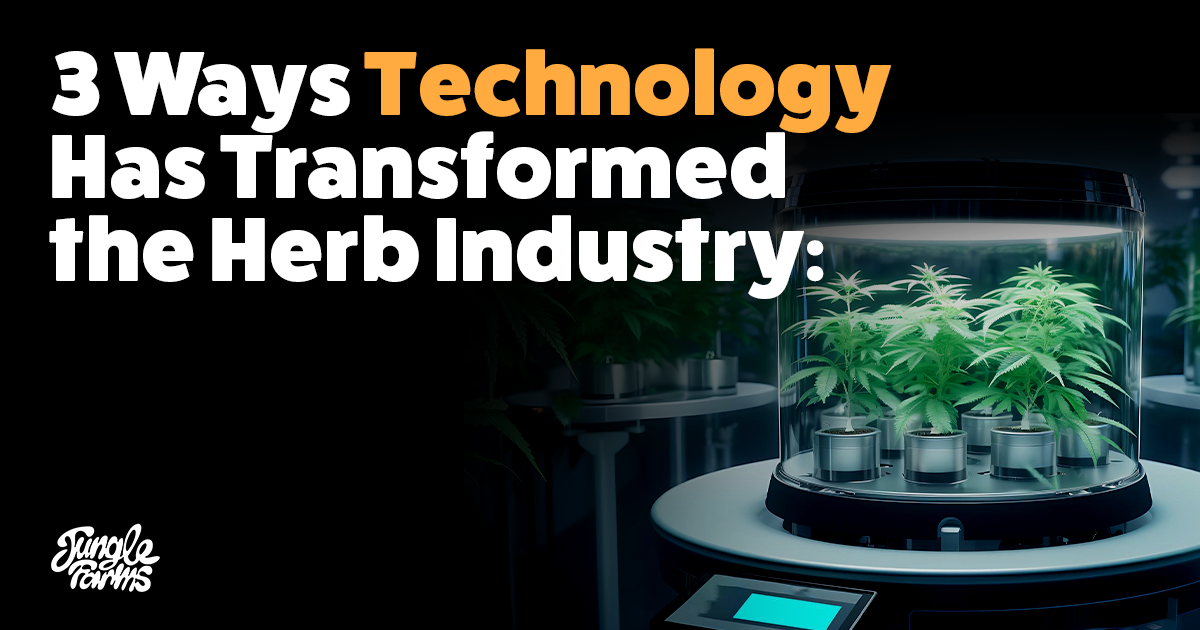In recent years, the cannabis industry has experienced a significant transformation, thanks to the infusion of technology into every stage of cultivation. From automated systems that control growing conditions to specialized apps and software for monitoring plant health, technology has revolutionized the way we grow cannabis. In this blog, we’ll explore how technology is playing a crucial role in modern cannabis cultivation, making it more efficient, sustainable, and yielding higher-quality products.
Automated Systems for Precise Control
Modern cannabis cultivation has moved beyond the simple pot-and-soil approach. Today, automated systems are at the forefront of managing the growing environment. These systems allow cultivators to precisely control factors like temperature, humidity, and lighting. The result? Optimal growing conditions that lead to healthier plants and higher yields.
Automated environmental controls use sensors and smart algorithms to adjust conditions in real-time. For example, if the temperature rises too high, the system can automatically activate fans or adjust lighting to cool down the room. Such precision ensures that cannabis plants receive the best conditions at all times, leading to faster growth and better-quality buds.
Integrated Monitoring with Apps and Software
Besides managing the physical environment, technology also plays a crucial role in tracking the health of cannabis plants. Several apps and software platforms have been developed for this purpose. These tools enable growers to monitor various parameters, such as pH levels, nutrient concentrations, and even detect early signs of pests or diseases.
One such tool is the “CannaApp,” which provides real-time data on plant health. It can send alerts to your smartphone if something goes awry, allowing growers to respond quickly and prevent potential issues. This not only saves time but can also prevent crop loss and maintain product quality.
Data-Driven Cultivation
The role of data in modern cannabis cultivation is nothing short of revolutionary. Gone are the days of relying solely on experience, intuition, and manual labor to produce cannabis. Thanks to advanced software solutions and data-driven approaches, cannabis growers now have the power to collect, analyze, and leverage data in ways that were unimaginable just a decade ago.
One of the most significant advantages of this data-driven approach is the ability to make well-informed decisions throughout the cultivation process. Growers can monitor a wide range of parameters, including temperature, humidity, pH levels, nutrient concentrations, and even pest or disease infestations, all in real-time. This wealth of information allows cultivators to respond proactively to changing conditions, ensuring that the plants receive the care they need precisely when they need it.
Consider the example of nutrient management. In the past, adjusting nutrient levels was often a manual process based on experience and periodic inspections. Now, with data-driven cultivation, growers can track nutrient levels continuously, ensuring that the plants receive precisely the right balance of nutrients at all times. This precision not only accelerates growth but also improves the quality and consistency of the final product.
Moreover, data-driven approaches extend to lighting schedules, which are crucial for cannabis cultivation. Growers can closely monitor the light exposure received by the plants and adjust the lighting schedules accordingly. This fine-tuned control not only maximizes growth rates but also influences factors like cannabinoid and terpene profiles. In other words, data-driven lighting management can help in tailoring the cannabis product to meet specific market demands or consumer preferences.
The impact of data goes beyond just yield and growth rates; it also significantly enhances the quality and consistency of the cannabis product. When you have a wealth of data at your disposal, it becomes easier to identify and rectify issues in real-time. If a particular batch of plants is showing signs of stress or disease, early intervention can prevent crop loss and maintain product quality. In a market where product quality is of utmost importance, this ability to maintain consistency is a game-changer.
Closing Thoughts
The integration of technology into modern cannabis cultivation has elevated the industry to new heights. Automated systems for environmental control, specialized apps and software for plant monitoring, data-driven cultivation, and sustainability measures are transforming how cannabis is grown.
As technology continues to evolve, it’s likely that we’ll see even more innovations in the field of cannabis cultivation. From artificial intelligence-assisted cultivation to advanced genetic analysis, the future of cannabis and technology promises to be an exciting journey.
The partnership between cannabis and technology is here to stay, and as it continues to grow, so too will the quality and efficiency of the products that reach consumers. This symbiotic relationship represents a promising future for the cannabis industry, where technology meets agriculture in a harmonious blend of science and nature.

